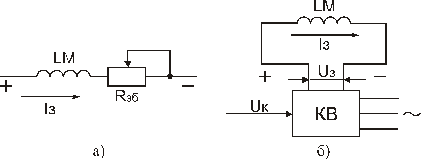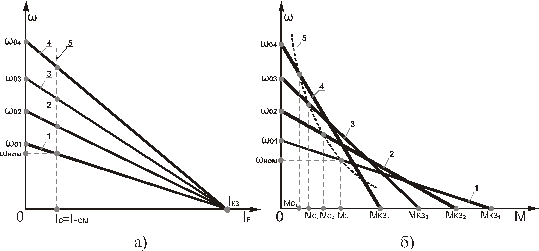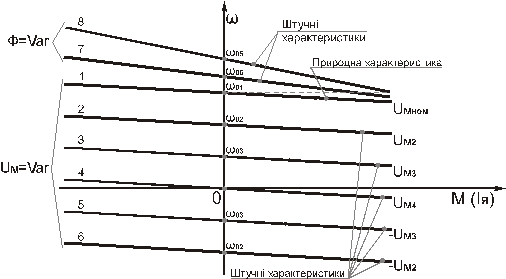
КАТЕГОРИИ:
Архитектура-(3434)Астрономия-(809)Биология-(7483)Биотехнологии-(1457)Военное дело-(14632)Высокие технологии-(1363)География-(913)Геология-(1438)Государство-(451)Демография-(1065)Дом-(47672)Журналистика и СМИ-(912)Изобретательство-(14524)Иностранные языки-(4268)Информатика-(17799)Искусство-(1338)История-(13644)Компьютеры-(11121)Косметика-(55)Кулинария-(373)Культура-(8427)Лингвистика-(374)Литература-(1642)Маркетинг-(23702)Математика-(16968)Машиностроение-(1700)Медицина-(12668)Менеджмент-(24684)Механика-(15423)Науковедение-(506)Образование-(11852)Охрана труда-(3308)Педагогика-(5571)Полиграфия-(1312)Политика-(7869)Право-(5454)Приборостроение-(1369)Программирование-(2801)Производство-(97182)Промышленность-(8706)Психология-(18388)Религия-(3217)Связь-(10668)Сельское хозяйство-(299)Социология-(6455)Спорт-(42831)Строительство-(4793)Торговля-(5050)Транспорт-(2929)Туризм-(1568)Физика-(3942)Философия-(17015)Финансы-(26596)Химия-(22929)Экология-(12095)Экономика-(9961)Электроника-(8441)Электротехника-(4623)Энергетика-(12629)Юриспруденция-(1492)Ядерная техника-(1748)
Basic features of speed regulation
|
|
|
|
Regulation range. Range (D=ω1:ω2 for nominal load is small, doesn’t exceeds 2-3, and with decreasing of a load it is reduced to 1 (to the speed of idling rate ω0)). Thus at the moment Mном range is D=AB, and at the moment Mx range is D=CD (see the figure mentioned above).
Direction of regulation. Single-zone, downwards from primary speed ωном.
Smoothness of regulation. Defines by the construction of rheostat Rяд. If its resistance may be smoothly changed it means that speed regulation will be smooth. Usually, it is step-by-step regulation.
Speed stability. It decreases as far as the range of regulation decreases. Generally stability is law. When resistance moment  varies in the range
varies in the range  the speed oscillations at the ω1 speed is ∆ω1, and at the ω2 speed it is ∆ω2, i.e. the stability abruptly deteriorates with the increasing of Rяд (see the figure above).
the speed oscillations at the ω1 speed is ∆ω1, and at the ω2 speed it is ∆ω2, i.e. the stability abruptly deteriorates with the increasing of Rяд (see the figure above).
Tolerated load in the range of regulation. As with such regulation the excitation current is a constant value and for any speed the load current could not exceeds Iяном (with heating conditions), than tolerated moment will be

independently of the speed value.
Thus, speed regulation realizes at constant moment that is equal to the nominal one. Power increases with the growth of speed by the linear law.

since Mном=Const, and mathematically this is equation of the y=kx type, where k is a proportionality constant.
Economy in regulation. Costs on the designing of the way are insignificant (low costs of regulated rheostat Rяд).
If operation on the lowered speed is short-term, than there is no need in regulated rheostat, so the starting rheostat available in circuit may be used. Operating costs are significant (additional resistance introduces in the primary current circuit – armature circuit). Method is not efficient. Thus if at speed regulation speed will be decreased in two times comparatively to ω0, than it will leads to consumptions of the half of consuming power on the power losses in the motor itself, i.e. efficiency factor cannot asymptotically exceeds the 50%.
In spite of low technico-economical factors the rheostat speed regulation os widely used due to simplicity of its realization, when a small range of regulation is needed and the operating time on the lowered speed is short too, especially in the electric drives of load-lifting mechanisms (cranes, elevators, etc), certain lathes and another equipment.
4.3.2 Regulation of DC Motor of Independent Excitation Speed by Means of Changing of Magnetic Flux Value
This method is widely used in electric drives due to simplicity of its realization and high efficiency.
With using of this method the regulation of magnetic flux realizes only in the direction of its decreasing (weakening) comparatively to the nominal one. That’s why this method often called the method of field weakening.
Origins of this are latent because of two circumstances.
1ST circumstance. Magnification of magnetic flux should be caused by increasing of excitation current, but since nominal magnetic flux is generated by rated excitation current, than increasing if excitation current higher than rated one will lead to additional inadmissible motor heat.
2nd circumstance. Motor is computed and constructed in such a way that its magnetic system is close to saturation even at the operation of motor in idling rate. I.e. operating point of motor is located on the magnetization curve in the saturation range, therefore further efforts to increase the excitation current may lead to the magnification of magnetic flux.
There are two available schemes of energizing of independent excitation winding (see the figure). Scheme from the left hand envisage the connection of additional resistor Rзб in the excitation circuit at the expanse of the excitation current as well as magnetic flux may be decreased. In the right hand scheme for changing of excitation current control rectifier УВ is used, which output voltage Uв is regulated in respect to control signal Uу. This scheme is more efficient and used for regulation of excitation current of the more powerful motors.

Set of artificial regulation characteristics can be obtained (see fragments of following figure) at consideration of coordinate change of idling rate ( ) and short circuit points (
) and short circuit points ( ) at magnetic flux variation, as on accordance to formula
) at magnetic flux variation, as on accordance to formula

Magnetic flux change will cause the change of ω0 (electromechanical characteristics intersects the ordinate axis in different points).
Short circuit current is defined by the formula
 .
.
Since at shirt circuit speed is  (armature is stationary), than
(armature is stationary), than
 ,
,  ,
,
 .
.
I.e. short circuit current doesn’t depend on magnetic flux, and remains constant and the point of short circuit  (left-hand fragment) will be common for the set of electromechanical characteristics
(left-hand fragment) will be common for the set of electromechanical characteristics .
.
This data is enough for construction of electromechanical (artificial) characteristics which intersects abscissa axis at one point ( ) and have different values of ω0 and each of which is greater than ω0.
) and have different values of ω0 and each of which is greater than ω0.
Shirt circuit moment has the next view

Since  then with decreasing of magnetic flux the moment
then with decreasing of magnetic flux the moment  is proportionally decreases.
is proportionally decreases.

As the result mechanical characteristics have the view of straight lines, presented on figure by the right hand.
Basic features of speed regulation
Range of regulation. Most of DC motors of independent excitation of ordinary lines don’t envisage deep regulation by this method; speed exceeds the nominal value on 10-20%, and it is enough for production mechanisms of wide usage. But for special lines of motors the range of regulation will be significantly wider (maximum speed can exceed the nominal one in 3-5 times). For such motors the commutation, strength and other problems connected with high-speed electric drives features should be solved.
Direction of regulation. Single-zone regulation upper from primary speed ωном.
Smoothness of regulation. Is defined by the rheostat Rзб construction or by the features of controlled rectifier. There are practically no problems with creation of high smoothness of regulation, since the excitation current is significantly lower than current in armature circuit.
Speed stability is rather high, but it decreases when magnetic field weakening.
Tolerated load in the range of regulation. Motor may be loaded by the tolerated current  that equals to the nominal one for any speed in whole range of regulation
that equals to the nominal one for any speed in whole range of regulation

(5th line of electromechanical characteristic, fragment a on the mentioned above figure). With this tolerated load moment defines as:
 (4.8)
(4.8)
where  – magnetic flux from the artificial characteristic.
– magnetic flux from the artificial characteristic.
As with this method of regulation

Than tolerated moment is less than nominal one too
 ,
,
i.e. motor may not be loaded on the nominal moment at the heating conditions.
For imagination of moment value by which motor can be loaded at the speed that exceeds its nominal value, equation of EMF of armature at the natural and artificial characteristics with  should be used:
should be used:
 (4.9)
(4.9)
It is seen from the (4.9) system that the right-hand part of equation is the same, i.e. the left-hand part of equations is equal too:
 ;
;  (4.10)
(4.10)
Considering (4.10) the relation from the (4.9) system may be written:
 (4.11)
(4.11)
where  – speed at the artificial characteristic, if
– speed at the artificial characteristic, if  .
.
Substituting the value of flux from the (4.11) into the (4.8) one, we will get:
 ,
,
 .
.
Let’s mark , than
, than
 . (4.12)
. (4.12)
Equation (4.12) in the mathematical interpolation is a hyperbola of the type
 .
.
In such a way at speed regulation by this method at certain speed increasing under the primary one the load moment should be decreased by hyperbolic law (curve 5 of mechanical characteristic on mentioned above figure).
If to multiply the equation (4.11) by  (
( ), then we will get
), then we will get
 ,
,
 ,
,
 ,
,
 ,
,
 .
.
When operating of DC motor of independent excitation by artificial characteristic (with the speed higher than nominal one at rated current Iяном) it may be loadd on its nominal power Pном. It is explained by the necessity of load decreasing when decreasing of magnetic flux, but with this the DC motor speed increases simultaneously and numerically equaled to the nominal motor power.
In such a way regulation at constant power is realized by this method.
This method is widely used in the electric drives of metal-cutting lathes, rolling mills, and it is fairly often used in combination with another speed regulation methods.
If with this motor isn’t specially intended for deep speed regulation than exceeding of speed regulation over primary one cannot be 10-20% (for specially constructed for this DC motor such exceeding can be in 3-5 times). Such restriction for motors of simple construction are explained mainly by impairment of commutation with increasing of speed (the reactive EMF of commutating contour increases), besides, armature mechanical strength restricts the speed. The lower border of speed restricts by magnetic system saturation.
4.3.3 Speed Regulation of DC motor with Independent Excitation by Armature Shunting
This method is used with the purpose of getting of more rigid characteristics at small speed by the scheme shown below.
The armature shunting by the resistor  is realized with compulsory resistor
is realized with compulsory resistor  connected in series. Resistors
connected in series. Resistors  and
and  are the voltage divider. Voltage regulation is possible at any of three cases of voltage divider parameters change
are the voltage divider. Voltage regulation is possible at any of three cases of voltage divider parameters change
 ,
,  ;
;
 ,
,  ;
;
 ,
,  .
.

With this the factor  of supply-line voltage divider changes
of supply-line voltage divider changes
 .
.
It is necessary to note that the load of motor significantly influences on the operation of such voltage divider, as the current which is consumed from the supply-line (and the voltage drop on the resistor
which is consumed from the supply-line (and the voltage drop on the resistor  ) depend on the armature current
) depend on the armature current  .
.
Static characteristics remain linear, and angular velocity of ideal idling rate  comparatively with
comparatively with  will reduce in
will reduce in  times. With this the inflexibility of rheostat characteristic with shunting 3 (see the figure) is significantly greater than at the current lack in armature circuit the voltage applied to the armature will not be equal to the supply-line voltage (as in the general case without shunting). In this case the applied voltage will be smaller than the supply-line voltage by the value of voltage drop in the serial resistor
times. With this the inflexibility of rheostat characteristic with shunting 3 (see the figure) is significantly greater than at the current lack in armature circuit the voltage applied to the armature will not be equal to the supply-line voltage (as in the general case without shunting). In this case the applied voltage will be smaller than the supply-line voltage by the value of voltage drop in the serial resistor , as the current will flow through it even with the absence of current in armature.
, as the current will flow through it even with the absence of current in armature.
From comparison of the second and third characteristics the advantages of shunting are seen. Speed  ′
′ may be obtained at ordinary conditions (characteristic 2 – the rheostat characteristic without shunting) and by shunting (3rd characteristic – rheostat characteristic with shunting). In such a way under the load
may be obtained at ordinary conditions (characteristic 2 – the rheostat characteristic without shunting) and by shunting (3rd characteristic – rheostat characteristic with shunting). In such a way under the load  the speed
the speed  ′
′ obtained by the 3rd characteristic is significantly rigid than the speed obtained by the characteristic 2.
obtained by the 3rd characteristic is significantly rigid than the speed obtained by the characteristic 2.
Basic features of speed regulation comparatively to the common rheostat regulation:
- more stable speed regulation (with specified  the overfall of
the overfall of  speed is less than
speed is less than  ;
;
- larger range of regulation (up to  ) due to higher stability (inflexibility);
) due to higher stability (inflexibility);
- tolerated load moment, as at the rheostat regulation, remains constant and equals to the nominal one (excitation current is the same as in the rheostat regulation);
- energy losses at the same regulation range as in the rheostat regulation is greater than in the rheostat one.
The last feature explicates the usage of this method in the low power drives.
4.3.4 Speed Regulation of DC Motor with Independent Excitation by Changing Armature Supply Voltage
The speed regulation by this method is realized with the DC motor of independent excitation armature feeding from the controlled source (controlled converter), making up the converter-motor system.

Electric machine converter of static controlled converter mat be a controlled converter.
The excitation winding LM of DC motor of independent excitation is feeding from the separate DC source, for example from uncontrolled (non-regulated) rectifier. The converter is characterized by the transfer coefficient (gain factor)
 ,
,
where  – output control signal.
– output control signal.
Static characteristics of DC motor of independent excitation will be straight if the armature reaction of motor will be neglected. Their view is shown on the figure below.

As at the ideal idling rate its speed is determined by the formula
 ,
,
Than with the change of the supply voltage of motor  the speed of ideal idling rate is proportionally changes at the artificial characteristics 2, 3, 4, 5, 6 (
the speed of ideal idling rate is proportionally changes at the artificial characteristics 2, 3, 4, 5, 6 ( ,
,  ,
,  ,
,  ).
).
Characteristics 1, 2, 3, 4, 5, 6 are located in all four quadrants and are parallel between each other. At  (4th characteristic) motor operates in the dynamic braking mode.
(4th characteristic) motor operates in the dynamic braking mode.
|
|
|
|
|
Дата добавления: 2014-01-05; Просмотров: 680; Нарушение авторских прав?; Мы поможем в написании вашей работы!